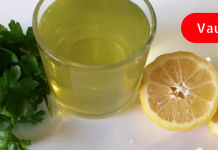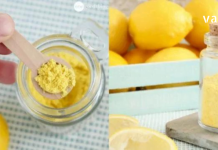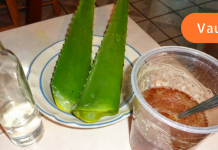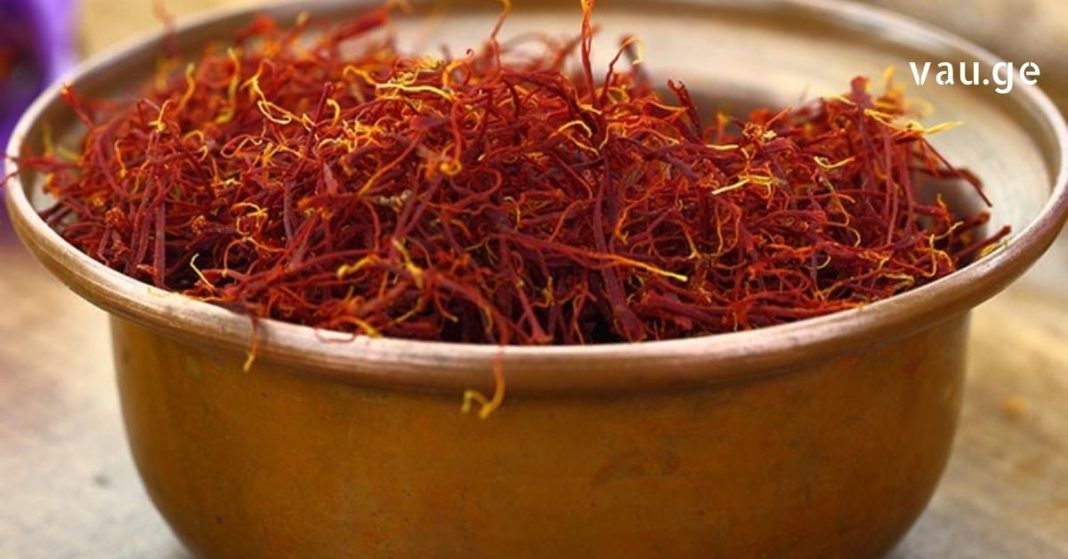Saffron, often referred to as the King of Spices, holds a prestigious place among the most treasured culinary and medicinal herbs worldwide. With its rich aroma, vivid color, and wide range of health benefits, saffron is not only prized for its culinary uses but also for its powerful healing properties. In fact, saffron is widely believed to be one of the oldest known spices used by humanity.
The word saffron originates from the Arabic term za’faran, which translates to “be yellow.” Interestingly, the flower of the saffron plant itself is a delicate light purple or lilac color. However, the part used as the spice – the three red-orange stigmas found in the center of the flower – are what give saffron its famous golden hue and its medicinal power.

In traditional and folk medicine, saffron has long been used to treat various diseases and conditions, including pancreatic disorders, diabetes, skin diseases, anxiety, sleep disturbances, and hair loss. Below are three natural remedies prepared using saffron, each of which targets specific health issues.
Recipe #1 – For Pancreatic Health and Diabetes Support
This simple but potent infusion can help support the pancreas, especially during periods of inflammation or frequent flare-ups, and can also assist in managing symptoms related to diabetes.
Ingredients & Preparation:
- Take 1 saffron flower, including the seeds (stigmas), and crush it gently.
- Pour 1 cup of boiling water over the crushed saffron.
- Allow it to steep or simmer for a few minutes to release the active compounds.
Dosage:
- Consume 1/4 cup of this infusion three to four times a day.
- In cases of frequent pancreatic attacks, it is recommended to take 1 tablespoon of the remedy every 1–2 hours for better results.
This recipe can help reduce inflammation, promote insulin production, and regulate blood sugar levels, all while offering antioxidant support.
Recipe #2 – For Vitiligo, Neurodermatitis, Psoriasis, Vision Impairment, and Hair Loss
This more elaborate preparation aims to assist in healing a wide range of chronic skin and nervous system-related conditions, as well as issues with eyesight and hair health. Saffron’s anti-inflammatory and regenerative properties make it particularly beneficial for such conditions.
Ingredients & Preparation:
- Take 8 saffron flowers and pour 4 cups of boiling water over them.
- Simmer the mixture over low heat for 5 to 7 minutes.
- Strain the liquid to extract the saffron essence.
- Reuse the remaining saffron material by adding it to 1/2 cup of fresh boiling water.
- Boil again for another 5 to 7 minutes.
- Strain the second infusion and combine it with the first extract.
Dosage:
- Take 1/3 cup of this combined saffron decoction three times daily.
- Continue this treatment for one month.
- After a break, the course can be repeated after one month if needed.
This treatment is believed to help regenerate skin pigment in cases of vitiligo, soothe itchy or inflamed skin in neurodermatitis and psoriasis, enhance visual clarity, and even reduce hair shedding by improving blood circulation to the scalp.
Recipe #3 – For Irritability, Anxiety, and Insomnia
This calming remedy is made from not just the saffron stigmas but also the fresh leaves and petals of the plant. It is especially effective for individuals dealing with stress, nervous tension, or difficulty falling asleep.
Ingredients & Preparation:
- Finely grind fresh saffron leaves and flowers.
- Place 1 teaspoon of the fresh herbal material into a cup.
- Add 1 cup of boiling water and cover to steep.
Infusion Time:
- Let the mixture sit for 30 minutes to fully release its calming components.
Dosage:
- Drink 1/4 cup of this infusion four times a day, 20–30 minutes before meals.
- The final dose should always be taken before bedtime, as it aids in promoting deep and restful sleep.
This recipe is particularly helpful for those suffering from mood disorders, mild depression, or chronic fatigue. Saffron contains natural compounds such as crocin and safranal, which are known to affect serotonin levels in the brain, contributing to an improved mood and relaxation.
Conclusion
While saffron is indeed one of the most expensive spices in the world, its medicinal value far exceeds its price. These traditional saffron-based remedies offer natural and holistic approaches to supporting the pancreas, managing diabetes, alleviating chronic skin and nervous system conditions, and improving overall mental well-being. However, it’s important to use saffron responsibly – excessive consumption can lead to side effects. Always consult a healthcare provider before starting any herbal regimen, especially if you have pre-existing conditions or are taking medication.
Saffron is more than a luxurious spice; it is a time-honored healer that has stood the test of centuries.


















